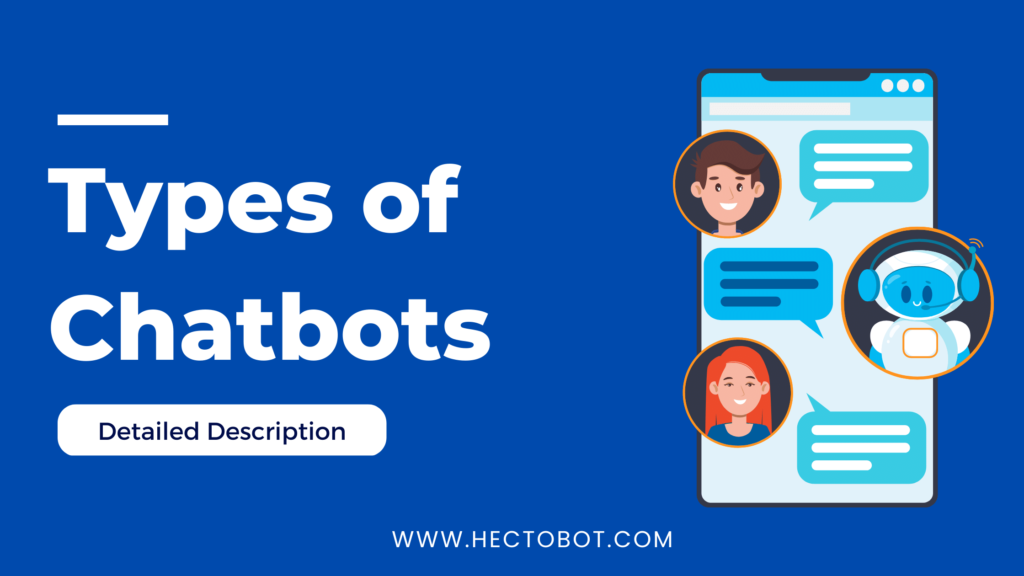Chatbots are computer programs designed to simulate conversation with human users, typically via messaging applications or websites. There are several types of chatbots, each with its own unique features and capabilities. In this article, we’ll explore the different types of chatbots and their use cases.
4 types of chatbots
Rule-Based Chatbots
Rule-based chatbots are the simplest type of chatbot. They operate on a set of predefined rules and are programmed to respond to specific user inputs with predefined responses. These chatbots are ideal for businesses that have a specific set of questions and answers for their customers. For instance, a hotel may use a rule-based chatbot to answer frequently asked questions such as room rates, availability, and amenities.
AI-Powered Chatbots
AI-powered chatbots, also known as smart chatbots, use machine learning and natural language processing (NLP) to understand and interpret user inputs. They can learn from user interactions and improve their responses over time. These chatbots are more advanced than rule-based chatbots and can handle complex conversations. They are ideal for businesses that have a large volume of customer inquiries and require personalized responses. For example, an e-commerce website may use an AI-powered chatbot to recommend products based on a customer’s purchase history and preferences.
Voice-Enabled Chatbots
Voice-enabled chatbots, also known as voice assistants or voice bots, use voice recognition technology to interact with users via voice commands. These chatbots are typically used in smart home devices, virtual assistants, and mobile apps. They are ideal for businesses that want to provide hands-free assistance to their customers. For instance, a bank may use a voice-enabled chatbot to allow customers to check their account balance or make transactions without needing to access a mobile app.
Hybrid Chatbots
Hybrid chatbots combine the features of rule-based and AI-powered chatbots. They can handle both simple and complex conversations and are ideal for businesses that want to provide a seamless customer experience. These chatbots use rule-based responses for frequently asked questions and AI-powered responses for more complex inquiries. For example, a customer service chatbot may use a hybrid approach to provide quick answers to common questions and personalized responses to more complex issues.
In conclusion, the type of chatbot you choose for your business will depend on your specific needs and goals. Rule-based chatbots are ideal for businesses with a small number of questions and answers, while AI-powered chatbots are more suitable for businesses with a large volume of customer inquiries. Voice-enabled chatbots are perfect for hands-free assistance, while hybrid chatbots provide a balance between simple and complex conversations. By choosing the right type of chatbot, you can provide an exceptional customer experience and improve efficiency for your business.
